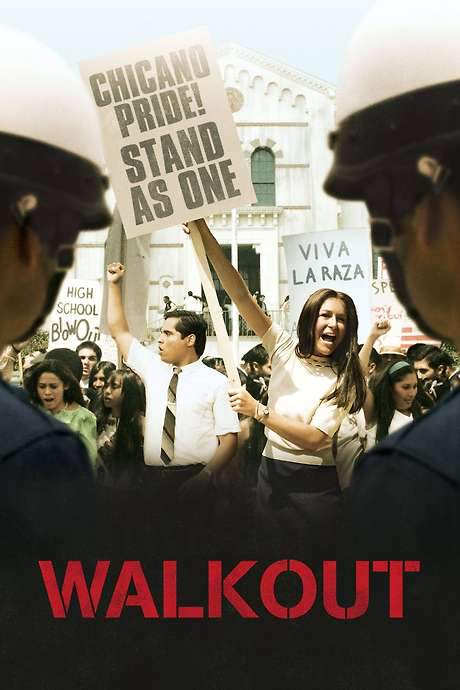
Walkout
Year: 2006
Runtime: 110 mins
Language: English
Based on true events, the film follows Sal Castro, a young Mexican‑American teacher in East Los Angeles who guides his students as they organize a peaceful walkout to demand better conditions and equal treatment in the public schools. Set amid the 1968 civil‑rights era, the story highlights their courage, the fight for justice and empowerment.
Warning: spoilers below!
Haven’t seen Walkout yet? This summary contains major spoilers. Bookmark the page, watch the movie, and come back for the full breakdown. If you're ready, scroll on and relive the story!
Walkout (2006) – Full Plot Summary & Ending Explained
Read the complete plot breakdown of Walkout (2006), including all key story events, major twists, and the ending explained in detail. Discover what really happened—and what it all means.
In East Los Angeles, several high schools mistreat Hispanic students—punishing them for speaking Spanish, locking bathrooms during lunch, assigning janitorial work as discipline, and quietly dissuading less-promising students from aiming for college. Paula Crisostomo grows tired of this inequality and, inspired by her Chicano teacher Sal Castro and facing opposition from her father, joins forces with student activists to seek real change.
A diverse group from across the city’s campuses bands together, with two or three students representing each school. Paula becomes especially drawn to one fellow student, Robert, as they begin to map out a plan. They collect surveys to document the problems and propose concrete improvements, then submit the results to the school board. The board refuses to consider the suggestions, sparking momentum for more drastic action.
During a heated meeting, Paula urges the students to walk out, a bold move that meets stiff resistance from authorities. The principal, Principal Ingles, threatens to expel Paula if she continues, and her father denounces the group as agitators. Undeterred, the movement gains traction: five East LA schools agree to walk out, and the event makes national headlines. Yet the school board’s cautious response leaves the Brown Berets hungry for more, while Paula’s father grapples with the upheaval at home.
The next phase sees the walkouts expanded to half of the schools, but this escalation comes at a price: police arrest and beat the protesters, and television coverage skews toward portraying the demonstrators as violent agitators with alleged Communist ties while crucial footage of police brutality is omitted. To protect the students, Paula extends an invitation to the families of the protesters, hoping a stronger collective presence will deter further violence.
With renewed family support, the students walk out again, and the school board finally agrees to listen. Paula also asks a reluctant Robert to attend prom, signaling a moment of personal connection amid the upheaval. However, the crackdown intensifies: twelve of the movement’s leaders—some from the Brown Berets—are suddenly arrested. The group discovers that Robert, an undercover LAPD officer, has been feeding information to the police and assisting in the arrests.
The charges escalate to conspiracy to disrupt a school, carrying a potential penalty of up to 66 years. Paula feels crushed, but her father encourages her not to give up. She helps organize a massive protest outside the jail, drawing in more supporters even as Robert tries to intervene. The crowd’s persistence pays off: all twelve students, along with Sal Castro, are ultimately released.
In the closing moments, the film presents real accounts from those involved in the walkouts, underscoring the lasting impact on the community. The epilogue notes a steady rise in Hispanic enrollment in Los Angeles colleges, signaling a shift that began with these courageous protests.
Last Updated: October 09, 2025 at 15:08
Unlock the Full Story of Walkout
Don't stop at just watching — explore Walkout in full detail. From the complete plot summary and scene-by-scene timeline to character breakdowns, thematic analysis, and a deep dive into the ending — every page helps you truly understand what Walkout is all about. Plus, discover what's next after the movie.
Walkout Timeline
Track the full timeline of Walkout with every major event arranged chronologically. Perfect for decoding non-linear storytelling, flashbacks, or parallel narratives with a clear scene-by-scene breakdown.

Characters, Settings & Themes in Walkout
Discover the characters, locations, and core themes that shape Walkout. Get insights into symbolic elements, setting significance, and deeper narrative meaning — ideal for thematic analysis and movie breakdowns.



